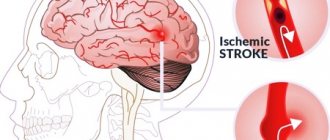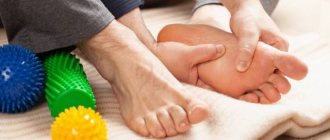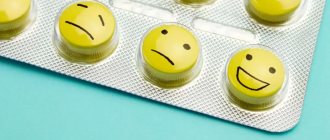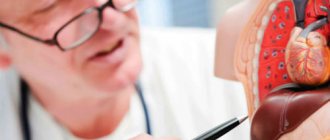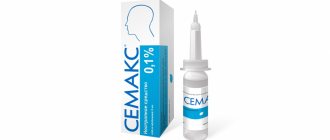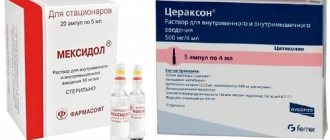Transcranial magnetic stimulation (TMS) is a research method in the field of neurology that makes it possible to induce depolarization or hyperpolarization in brain neurons. This technique is widely used in the Yusupov Hospital and makes it possible to study the excitability of cortical neurons, the interaction of different parts of the brain with each other, and the localization of functions in the cerebral cortex.
Transcranial magnetic stimulation of the brain: reviews
Transcranial magnetic stimulation of the brain in Moscow is a relatively new and very promising direction in medicine. Using this method, it is possible to map different cortical representations, which in itself is extremely important for understanding the functional organization of the human brain, as well as the mechanisms of its control.
Transcranial magnetic stimulation of the brain makes it possible to accurately determine the boundaries of the location of various brain functions, for example, the cortical representation of visual analyzers, speech centers, and memory.
Reviews of transcranial magnetic stimulation among doctors in Moscow and other Russian cities are positive, since the procedure allows the development of new approaches to the rehabilitation of patients with neurological diseases.
The procedure is very accurate, informative, effective and painless. The technique allows many people to get rid of serious diseases.
Cyclic transcranial magnetic stimulation of the brain
The technique is indicated for children with pathologies such as autism, encephalopathy with delayed speech development, and attention deficit hyperactivity disorder. The complex of transcranial magnetic stimulation and drug therapy helps improve speech, it becomes clearer, vocabulary increases, and children’s cognitive interest increases. Patients leave positive reviews about the effectiveness of the procedure.
At the Yusupov Hospital, neurologists use transcranial magnetic stimulation to treat complex diseases in adult patients aged 18+.
TMS has proven effective in treating depression, schizophrenia, and post-traumatic stress disorder.
results
Before treatment, the severity of motor deficit in patients of the 1st (main) and 2nd (control) groups did not differ significantly and averaged 1.8±0.1 points in the upper extremity and 3.7±0.24 points in the lower extremity limbs. In patients of the 1st group, during the use of “no-threshold” nTMS, the motor deficit regressed on average and amounted to 2.6±0.3 points in the upper limb, in the 2nd group - 4.5±0.5 points (p=0 ,04).
When assessing the degree of impairment of motor functions and vital functions using the Rankin scale, a significant increase in motor activity was found in group 1 of patients (Fig. 1).
Figure 1: Results of a study of motor functions and vital activity in patients with stroke before and after treatment with “non-threshold” nTMS according to the Rankin scale (points), Me [Q1; Q3].
After nTMS, an increase in motor activity in the 1st group of patients was revealed by 42.1% (from 3.33 [3.0;4.0] to 1.93 [1.0;3.0] points, in the 2nd group by 25.8% (from 3.37 [3.0;4.0] to 1.93 [2.0;3.75] points; p=0.006).
When analyzing daily activity according to the Rivermead mobility index, with initially comparable values, an improvement in walking function and mobility was revealed in patients receiving “no-threshold” nTMS (Fig. 2).
Figure 2: Results of a study of mobility in patients with stroke before and after treatment with “no threshold” nTMS according to the Rivermead index (points), Me [Q1; Q3]
Thus, in the 1st group of patients, an increase in the average number of points on the Rivermead mobility index was revealed by 2.1 times (from 5.57 [3.0;7.0] to 11.64 [9.75;14.0] points), which contributed to free movement within the ward without the use of auxiliary means (compared to group 2 p = 0.0006). Moreover, improvement in motor activity in the main group occurred 3.2±0.6 days earlier than in the control group (p=0.005).
According to numerous studies, under the influence of MP, reversible structural changes in cell membranes occur, their permeability, direction and speed of various intracellular biochemical processes change (increased mitochondrial activity and the level of intracellular ATP, increased work of ion pumps, improved transmembrane transport of substances, improved plastic function of the cell and activation of protein synthesis), which leads to decongestant, neuromyostimulating, vasodilating, trophostimulating, and metabolic effects [5, 10]. Improved overall mobility of patients with nTMS resulted in increased independence in daily life.
When assessing functional independence using the FIM scale, with initially comparable values, a significant increase in the degree of independence was found in patients of group 1 (Fig. 3).
Figure 3: Results of a study of functional independence in patients with stroke before and after treatment with “threshold-free” nTMS according to the FIM scale (points), Me [Q1; Q3]
Analysis of data from the FIM scale, which integrates assessment of vital functions and activity limitations, showed in group 1 an increase in scores by 38.1% (from 62.5[55.0;75.0] to 86.3 [79.25;95. 0] points), which reflects an improvement in motor and social activity and, accordingly, quality of life compared to the 2nd (control) group (from 59.1 [48.25;68.0] to 67.7 [71.0] ;88.5] points; p=0.031).
When studying the psycho-emotional status before treatment in patients who had suffered a stroke, according to the HADS scale, subclinically expressed anxiety was revealed in both the main and control groups, which was also the rationale for including patients in the study (see table).
Table: Results of a study of anxiety and depressive disorders in patients with stroke before and after treatment with non-threshold nTMS on the HADS scale (points), Me [Q1; Q3]
| HADS scale | 1st (main) group (n=48) | p | 2nd (control) group (n=45) | R | ||
| 2–3 days | 12–14 days | 2–3 days | 12–14 days | |||
| Anxiety Depression | 9,1 [7,1; 11,0] 6,9 [5,3; 8,4] | 6,4 [5,8; 7,9] 5,8 [4,3; 7,1] | <0,0001*** <0,0001*** | 9,0 [7,0; 9,2] 6,8 [5,0; 8,2] | 8,3 [7,0; 8,7] 6,2 [6,0; 7,0] | 0.102 (ns) 0.562 (ns) |
As a result of complex treatment using non-threshold nTMS, the following was revealed in patients: - a decrease in anxiety symptoms: group 1 - by 29.7%, group 2 - by 7.8% (p <0.0001); - reduction in symptoms of depression: group 1 - by 15.9%, group 2 - by 8.8% (p <0.0001).
In all patients upon admission, linear blood flow velocity (LBV) in the internal carotid artery was reduced on the side of the affected hemisphere and amounted to 37.3±4.9 cm/s. After treatment, patients in group 1 showed an increase in LSC in the internal carotid artery on the side of the lesion by 18.1% (compared to group 2 p = 0.042), which may be due to an improvement in microhemocirculation and rheological properties of blood under by the action of MP [5].
According to a number of authors, in case of dysfunction of suprasegmental autonomic structures in the acute period of stroke, the use of non-threshold nTCMS is justified, which helps normalize the neurophysiological function of the limbic system and has a nootropic effect [8]. Perhaps the improvement in indicators of the psycho-emotional state is associated with an anti-edematous, neuroprotective effect, improved microhemocirculation and a decrease in hypoxia of the nervous tissue under the influence of nTMS, which, of course, requires further research.
Rhythmic transcranial magnetic stimulation
Rhythmic transcranial magnetic stimulation is a proven effective method for treating a number of diseases of the nervous system, successfully used in the Yusupov Hospital.
The technique is used in the treatment of the following pathologies:
- post-stroke pain syndrome;
- Parkinson's disease stage 3;
- trigeminal neuralgia;
- migraine;
- neuropathic pain;
- multiple sclerosis;
- spinal injury;
- tinnitus and others.
The clinical effect is observed after 10 therapy sessions, for depression - after 20. Experienced neurologists at the Yusupov Hospital, in combination with transcranial magnetic stimulation, depending on the individual characteristics of the patient’s body, can also prescribe medication and physical therapy.
Transcranial magnetic stimulation: contraindications to its implementation
The method is not possible if the patient is suspected of having a cerebral aneurysm, has a pacemaker, or is pregnant. When diagnosing epilepsy, the method should be used with extreme caution, since transcranial brain stimulation can trigger the development of an attack.
Medicine does not stand still; scientific research is carried out every day, thanks to which new effective methods for treating many diseases emerge.
The Yusupov Hospital is equipped with modern medical equipment that allows the latest proven diagnostic and treatment methods to be applied in practice.
The hospital staff includes leading Russian doctors who are ready 24 hours a day, 7 days a week to provide patients with high-quality medical care that meets European standards. You can make an appointment at the hospital by phone.
Technique of TES therapy
Before using transcranial electrical stimulation to treat any disease, it is necessary to consult a physiotherapist and a neurologist. Therapy should not be performed immediately after eating; the interval between eating and the session should be at least two hours.
During TES therapy, the patient needs to lie down or sit, and the specialist places electrodes on the patient’s forehead, on the back of the head and on the nipples. Before applying the electrodes, the patient's skin is thoroughly cleaned and checked for damage, formations or rashes.
Ear jewelry should be removed during TES therapy. During the procedure, the patient may feel a slight vibration, tingling in the area where the electrodes are applied, and may also observe light flickering with their eyes closed. Electrodes do not leave marks on the skin.
To carry out the manipulation, special pulsed low-amplitude currents with a rectangular bipolar pulse shape are used. During the first procedure, the minimum current reading should be used, which should not be increased even if the patient does not have any third-party sensations. In subsequent sessions, the current levels are gradually increased until the patient begins to feel their presence. If discomfort is detected, the specialist should reduce the supplied current. Gradually, towards the end of the procedure, the current strength should be reduced to zero.
The patient should experience the above sensations, but they should not be unpleasant to him. In this way, the optimal current strength is regulated, and if it bears fruit in the form of positive results, then during further sessions the specialist will use exactly this current, without changing it upward.
If the patient has severe pain, then similar procedures can be performed several times a day with an interval of at least 4-6 hours. If the pain does not disappear, the patient is advised to undergo additional medical consultation and examination.
Currents affect the alpha rhythms of the human brain at a frequency of 70-80 hertz, stimulating the production of endogenous opioid peptides. After the session, those who suffer from blood pressure disorders are advised to rest for fifteen minutes and undergo a neck-collar massage. The duration of one procedure of transcranial electrical stimulation is 20 minutes, although in case of severe pain this time can be increased. The course of therapy usually includes about 15 sessions. In case of exacerbation of chronic diseases, TES therapy is aimed at relieving emerging symptoms, which can be done in 5 procedures. In 1 calendar year, it is permissible to conduct up to 60 sessions, repeating courses every 2-3 months.
